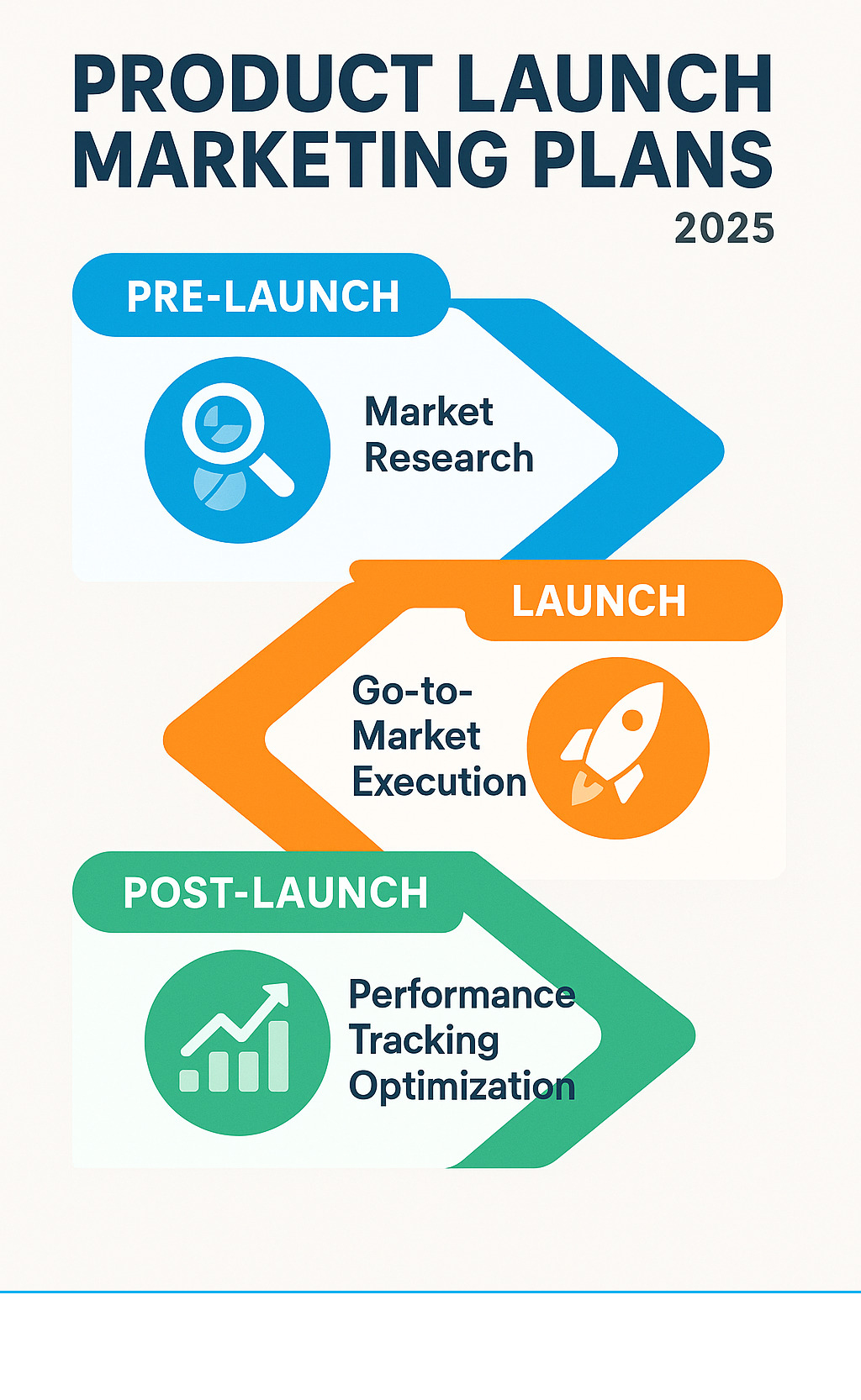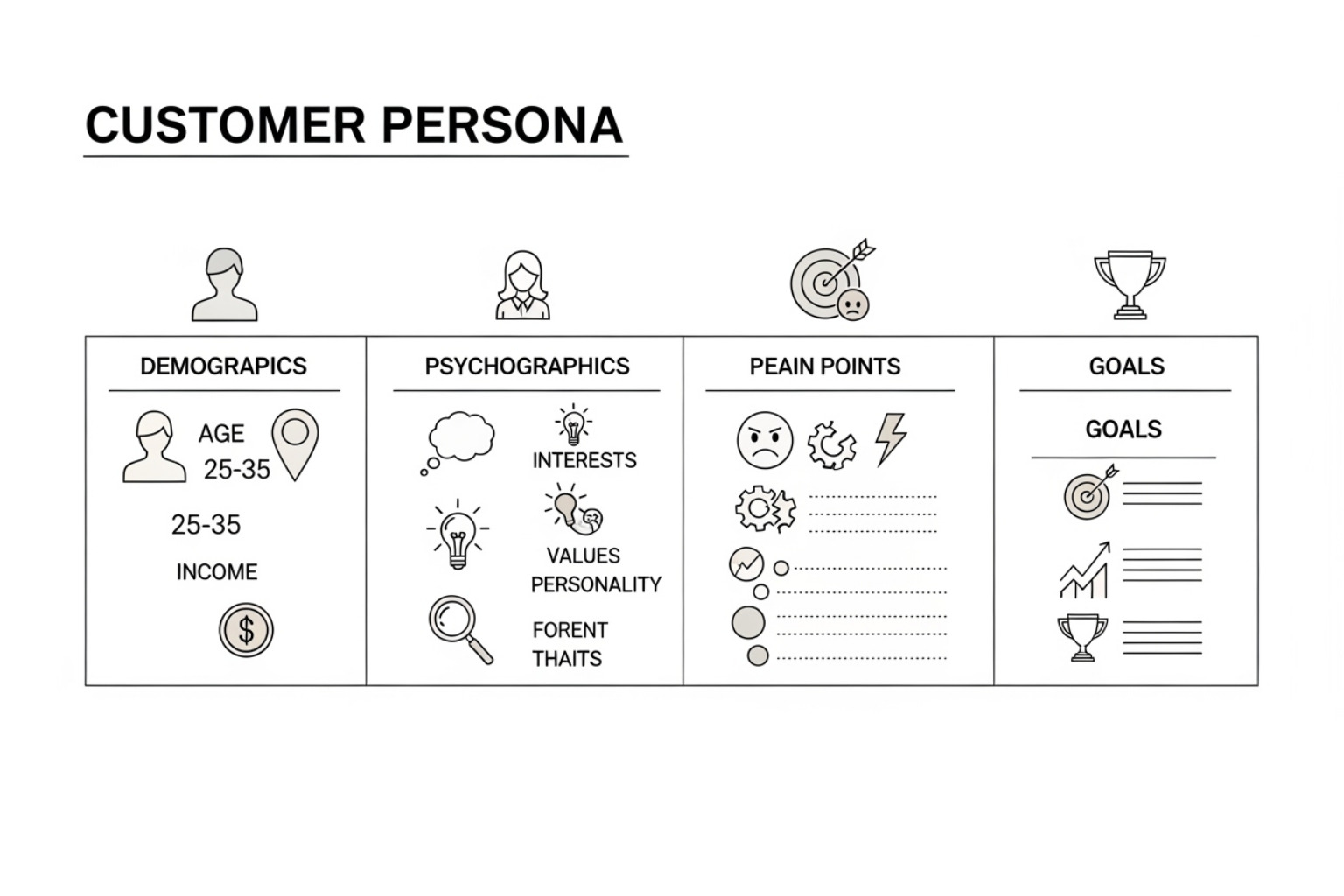From Idea to Impact: Your Guide to a Seamless Product Launch Marketing Plan
Master product launch marketing plans. Learn strategy, execution, and post-launch growth to ensure your product makes a real impact.
Master product launch marketing plans. Learn strategy, execution, and post-launch growth to ensure your product makes a real impact.

Product launch marketing plans are the comprehensive strategies that guide a product's introduction, awareness, and adoption. A successful plan moves through three core phases: Pre-Launch (research, messaging, buzz), Launch (go-to-market execution), and Post-Launch (tracking, feedback, optimization). It's built on key elements like target audience personas, a unique value proposition, a multi-channel approach, and clear success metrics.
The stakes are high. A staggering 60% of developed products never reach the market, and many that do fail to generate meaningful revenue. But failure isn't inevitable. The difference between soaring and sinking often comes down to a single factor: a well-structured marketing plan that creates genuine market demand.
A launch is more than an announcement. It’s about proving your product’s value, reaching the right people with a resonant message, and building sustainable momentum.
I'm Tony Crisp, and I've guided product launch marketing plans for tech leaders like Nvidia, HTC Vive, and AMD. I've seen how data-driven creativity and strategic brand building separate successful launches from expensive failures.

Product launch marketing plans vocab explained:
You've built an amazing product, but rushing to market without a solid foundation is a common pitfall. Success hinges on understanding the difference between your long-term marketing plan—the grand vision for your brand—and your launch plan, which is a laser-focused mission to introduce a specific product with maximum impact. They aren't competing strategies; your marketing plan sets the stage, and your launch plan choreographs the opening night.
It's also vital to distinguish between strategy and plan. Your product launch strategy is your north star, answering why this product matters and what you aim to achieve. It defines your audience, positioning, and core message. Your product launch plan is the detailed roadmap of how you'll execute, with specific tactics, timelines, and budgets. Strategy is the destination; the plan is the GPS.
At CRISPx, our LaunchX framework focuses on building genuine brand value from day one. We ensure your launch solves real problems by digging deep into customer research.
| Aspect | Product Launch Strategy | Product Launch Plan |
|---|---|---|
| Scope | Broad vision and guiding principles | Detailed execution steps |
| Timeline | Long-term direction and objectives | Short-term launch activities |
| Focus | Target audience, positioning, key messages | Tactics, channels, budget, timeline |
| Key Question | "What do we want to achieve and why?" | "How will we execute this step-by-step?" |
| Deliverables | Positioning statements, personas, objectives | Marketing calendar, task assignments, budgets |
Most launches fail because teams skip strategy and jump to tactics—like throwing darts in the dark. Common failures stem from poor research, a weak value proposition, or targeting the wrong audience. This is why our DOSE Method™ ensures every step is grounded in data. Through our OrbitX approach, we use growth marketing psychology to understand customer motivation, leveraging AI to make planning more precise.
Every successful product launch marketing plan requires six essential building blocks. It starts with market research to uncover industry trends, competitor landscapes, and customer pain points. From there, you develop target audience personas that go beyond demographics to understand motivations and frustrations. This informs your positioning and messaging, articulating the unique problem your product solves. Your go-to-market strategy then maps out pricing, channels, and sales tactics. Finally, a realistic budget and resources plan, along with clear KPIs and success metrics, ensures your launch is both feasible and measurable. When these components work in harmony, you create lasting impact.
The pre-launch phase is where the foundation for success is built. It's not about a checklist; it's about creating genuine anticipation before your product even exists. This is where we do the deep work: validating market assumptions, crafting a resonant narrative, and ensuring team-wide alignment. Our LaunchX approach focuses on building lasting brand value that will serve you long after launch day.
Before making noise, we must understand the audience. This means digging deep with both human insight and AI-powered tools.

We start by identifying customer pain points through interviews and surveys to understand the problems your product solves. Competitive analysis (SWOT) helps us find their blind spots and carve out your unique space. Here, AI-powered sentiment analysis gives us an edge, processing vast amounts of social and review data to spot trends human analysis might miss. This market gap identification directly informs our product marketing strategy, ensuring we build something people truly need.
With a clear understanding of the landscape, we define what makes your product special. This is where our brand strategy expertise comes in. We define your Unique Selling Proposition (USP)—the single most important benefit that sets you apart. We then translate this into key taglines and benefit statements that are memorable and compelling. Crucially, we ensure message consistency across all teams, often by writing a mock press release early on to align everyone on the customer-facing story.
Now it's time to build anticipation. Our OrbitX approach uses growth marketing psychology to create genuine excitement. Tactics include:
A strong pre-launch phase creates momentum that turns products into movements.
Launch day is when your product launch marketing plans transform from documents into results. It's a coordinated performance where every channel, message, and team member must work in harmony. Our DOSE Method™ ensures this orchestration is seamless, creating an impact far greater than the sum of its parts.

Effective plans are strategic, not a spray-and-pray effort. We focus on channels where your audience is actively looking for solutions. For B2B launches, LinkedIn is king, ideal for targeted ads and thought leadership. For B2C launches, platforms like Facebook, Instagram, and TikTok are where visual storytelling and social proof thrive.
The magic is in integrating these channels to create a unified customer experience that reinforces your message at every touchpoint.
Authentic recommendations are invaluable. Our OrbitX approach leverages growth marketing psychology, understanding that people buy into stories and communities. The key is relevance over reach; a micro-influencer with an engaged niche audience is more valuable than a celebrity with disinterested fans. Authentic partnerships create contagious enthusiasm.
We also focus on generating social proof:
Social proof builds on itself, creating a virtuous cycle of growth. It's psychology in action, leveraging our human need to belong in the most authentic way.
Launch day isn't the finish line; it's the starting gun. The post-launch phase is where you transform initial excitement into sustained growth. This is where many companies stumble, but it's where our Data-Driven Product Marketing approach proves its worth by turning early feedback into product excellence.

The goal is to sustain momentum while building for the future. Your early adopters are giving you a roadmap for improvement—if you're listening. This feedback loop is the engine for continuous growth.
In the post-launch phase, data is your guide. We focus on KPIs that reveal your product's health and trajectory. Key metrics include sales revenue, Customer Acquisition Cost (CAC), conversion rates through your funnel, product adoption rate for core features, Net Promoter Score (NPS) to predict future growth, and social media engagement to gauge brand sentiment. Tracking these systematically reveals patterns, showing which channels deliver high-value customers and which features drive engagement.
Customer feedback is gold, and AI helps us mine it in real-time. We collect feedback systematically through surveys, app store reviews, and social listening. The magic happens when we use AI to analyze this qualitative data for trends. Natural language processing can scan thousands of comments to identify recurring themes and sentiment far faster than a human team.
This technology helps us spot emerging issues and opportunities instantly. Turning feedback into product improvements is central to our LaunchX approach to building brand value. Even negative feedback can contain the seeds of your next breakthrough feature. When you close the loop with customers by implementing their suggestions, you build incredible loyalty and nurture brand advocates.
This combination of systematic feedback and AI analysis creates a continuous improvement engine, evolving good launches into market leaders.
I often get these questions from tech founders. Here are some quick insights based on our DOSE Method™ approach.
The three core stages are Pre-Launch, Launch, and Post-Launch.
Success is measured against pre-defined Key Performance Indicators (KPIs) that tell the whole story. We track a mix of financial metrics (revenue, CAC), product metrics (adoption, usage), marketing metrics (traffic, conversions), and customer satisfaction metrics (NPS). Our data-driven approach, improved by AI, provides a complete picture for ongoing optimization.
Most launches fail due to a disconnect from the market. The primary culprits are insufficient market research, a weak value proposition, ineffective messaging, and targeting the wrong audience. These issues lead to products that fail to differentiate themselves and get lost in the noise. A solid, strategic plan guided by validated customer insights is the best prevention.
We've walked through the key stages of a product launch marketing plan, from foundational strategy to post-launch optimization. The common thread is a data-driven, strategic approach that puts your customer at the center of every decision. Success isn't about the biggest budget; it's about understanding your audience so deeply that your message resonates and your value is immediately clear.
This is where our frameworks make the difference:
At CRISPx, this combination of strategy, psychology, and technology transforms product launches from risky experiments into predictable growth engines. We don't just get your product to market—we ensure it thrives.
Your breakthrough product deserves a launch that creates lasting impact.